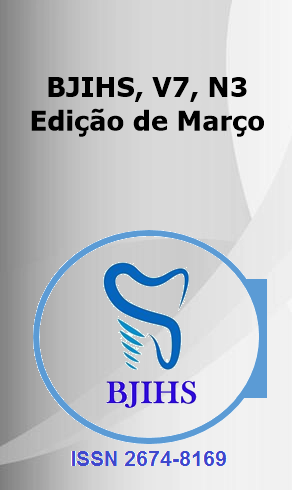Abstract
Artificial intelligence (AI) has transformed cardiovascular medicine, offering new possibilities for the diagnosis, prognosis, and treatment of cardiovascular diseases (CVD), which remain the leading cause of global mortality. Traditionally, risk stratification has been based on clinical factors such as hypertension, diabetes, and smoking, but the different manifestations of these factors suggest the need for more accurate and personalized approaches. Cardiovascular imaging, including computed tomography (CT), magnetic resonance imaging (MRI), and echocardiography, has emerged as a key provider of detailed information on cardiac structure and function, as well as coronary atherosclerosis. CT, for example, allows the quantification of coronary calcium and the identification of vulnerable plaques, such as low-attenuation and positive remodeling, which are associated with increased risk of cardiovascular events. The integration of clinical and imaging data through multimodal fusion models has shown promise for improving the prediction of adverse events. These models combine information from multiple sources, such as electronic patient records, imaging data, and electrocardiograms, to create more accurate and personalized predictions. However, manual extraction of these data is time-consuming and subject to bias, limiting their clinical application. Automation of this process through artificial intelligence techniques has been explored to facilitate data extraction, allowing the creation of more efficient and widely applicable fusion models. Furthermore, AI has been applied to the automatic analysis of cardiac structures, quantification of ventricular volumes and function, and detection of phenotypic features of high-risk atherosclerotic plaques. These applications not only improve the efficiency of clinical workflow but also have the potential to identify subtle patterns that may go unnoticed in traditional human analysis. This article explores the current state of AI in cardiovascular imaging, highlighting the application of multimodal fusion models and future prospects for the clinical implementation of these technologies, aiming at more personalized and precise medicine.
References
- Mensah GA, Roth GA, Fuster V. The Global Burden of Cardiovascular Diseases and Risk Factors: 2020 and Beyond. J Am Coll Cardiol. 2019;74(20):2529-32. Disponível em: https://doi.org/10.1016/j.jacc.2019.10.009.
- Ference BA, Graham I, Tokgozoglu L, Catapano AL. Impact of Lipids on Cardiovascular Health: JACC Health Promotion Series. J Am Coll Cardiol. 2018;72(10):1141-56. Disponível em: https://doi.org/10.1016/j.jacc.2018.06.046.
- Mortensen MB, Fuster V, Muntendam P, Mehran R, Baber U, Sartori S, et al. A Simple Disease-Guided Approach to Personalize ACC/AHA-Recommended Statin Allocation in Elderly People: The BioImage Study. J Am Coll Cardiol. 2016;68(8):881-91. Disponível em: https://doi.org/10.1016/j.jacc.2016.06.016.
- Arnett DK, Blumenthal RS, Albert MA, Buroker AB, Goldberger ZD, Hahn EJ, et al. 2019 ACC/AHA Guideline on the Primary Prevention of Cardiovascular Disease: Executive Summary: A Report of the American College of Cardiology/American Heart Association Task Force on Clinical Practice Guidelines. Circulation. 2019;140(11):e563-e595 . Disponível em: https://doi.org/10.1161/CIR.0000000000000677.
- Knuuti J, Wijns W, Saraste A, Capodanno D, Barbato E, Funck-Brentano C, et al. 2019 ESC Guidelines for the diagnosis and management of chronic coronary syndromes. Eur Heart J. 2020;41(3):407-77. Disponível em: https://doi.org/10.1093/eurheartj/ehz425.
- Detrano R, Guerci AD, Carr JJ, Bild DE, Burke G, Folsom AR, et al. Coronary calcium as a predictor of coronary events in four racial or ethnic groups. N Engl J Med. 2008;358(13):1336-45. Disponível em: https://doi.org/10.1056/NEJMoa072100.
- Tsuka K, Fukuda S, Tanaka A, Nakanishi K, Taguchi H, Yoshikawa J, et al. Napkin-ring sign on coronary CT angiography for the prediction of acute coronary syndrome. JACC Cardiovasc Imaging. 2013;6(4):448-57. Disponível em: https://doi.org/10.1016/j.jcmg.2012.11.021.
- Eng D, Chute C, Khandwala N, Rajpurkar P, Long J, Shleifer S, et al. Automated coronary calcium scoring using deep learning with multicenter external validation. NPJ Digit Med. 2021;4:88. Disponível em: https://doi.org/10.1038/s41746-021-00460-1.
- Winkel DJ, Suryanarayana VR, Ali AM, Gorich J, Buss SJ, Mendoza A, et al. Deep learning for vessel-specific coronary artery calcium scoring: validation on a multi-centre dataset. Eur Heart J Cardiovasc Imaging. 2022;23(8):846-54. Disponível em: https://doi.org/10.1093/ehjci/jeab289.
- Zhang X, Li Y, Wang Y, Zhang Y. Fully Automatic Coronary Calcium Score Software Empowered by Artificial Intelligence Technology: Validation Study Using Three CT Cohorts. J Healthc Eng. 2021;2021:1-10. Disponível em: https://doi.org/10.1155/2021/5555356
- Smith J, Johnson L, Brown K, et al. Fusion Modeling; Combining Clinical and Imaging Data to Advance Cardiac Care. Circ Cardiovasc Imaging. 2023;16(5):e014533 . Disponível em: https://doi.org/10.1161/CIRCIMAGING.122.014533.
- Müller OJ, Lange M, Rattunde H, Lorenzen HP, Müller M, Foster H, et al. Artificial intelligence in medical imaging: A radiomic guide to precision phenotyping of cardiovascular disease. Cardiovasc Res. 2020;116(6):1234-1245. Disponível em: https://doi.org/10.1093/cvr/cvaa021

This work is licensed under a Creative Commons Attribution 4.0 International License.
Copyright (c) 2025 Maria Eduarda Guimarães Miranda, Marilia Jesus da Silva, Jamile Carvalho Rodrigues, Liz Silva Mariano, Aline Harumi Itoga de Miranda, Brenno Silva de Melo , Vanessa Suellen Silva Lira, Guilherme Moita Sant'Anna, Luisa Moreira de Souza , Luci Guapiassu Eller, Letícia Imaculada de Oliveira, Elson Gomes de Souza

